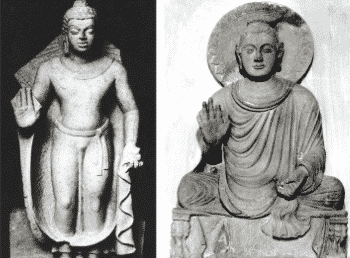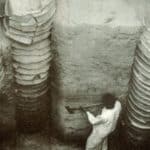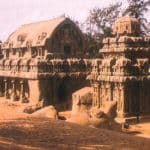How to find about trade and traders
- South India was famous for gold, spices, especially pepper, and precious stones.
- Pepper was valued in the roman empire and was called black gold.
- Traders carried many of these goods to Rome by ships and caravans.
- Many Roman gold coins have been found in South India.
- Traders took advantage of the monsoon winds to cross the seas quickly.
Also Read: Class 6 Ch 9 History- Vital villages, thriving towns
- Muvendar is a Tamil word meaning three chiefs. It is used for the heads of three ruling families, the Cholas, Cheras and Pandyas.
- They became powerful in South India around 2300 years ago.
- Each of the three chiefs had two centres of power: one inland and one on the coast.
- Of these six cities, two were very important:
- Puhar or Kaveripattinam- the port of the Cholas.
- Madurai- the capital of the Pandyas.
- The chiefs did not collect regular taxes but demanded and received gifts from the people.
- They went on military expeditions and collected tribute from neighboring areas.
- They kept some of the wealth and distributed the rest amongst their supporters.
The Satavahanas
- The Satavahanas became powerful in western India 200 years later.
- Gautamiputra Shri Satakarni was the most important ruler.
- He and other Satavahana rulers were known as lords of the dakshinapatha (literally the route leading to the south), which was a name for the entire southern region.
The story of the Silk Route
- Techniques of making silk were first invented in China around 7000 years ago.
- Some people from China who went to distant lands carried silk with them and the path they followed came to be known as the Silk Route.
- The best-known of the rulers who controlled the Silk Route were the Kushanas, who ruled over central Asia and north-west India around 2000 years ago.
- Their two major centres of power were Peshawar and Mathura. Taxila was also a part of their kingdom.
- During their rule, a branch of the Silk Route extended from Central Asia down to the seaports at the mouth of the river Indus, from where silk was shipped westwards to the Roman Empire.
- The Kushanas were amongst the earliest rulers of the subcontinent to issue gold coins which were used by traders along the Silk Route.
The spread of Buddhism
- Kanishka, the most famous Kushana ruler, ruled about 1900 years ago.
- He organized a Buddhist Council for scholars to meet and discuss important matters.
- Ashvaghosha, who wrote Buddhacharita-a biography of the Buddha, lived in his court. He and other Buddhist scholars now began writing in Sanskrit.
- Mahayana Buddhism, a new form of Buddhism, now developed. It had two distinct features:
- Earlier, the Buddha’s presence was shown in sculpture by using certain signs. For example, the peepal tree symbolized his enlightenment. Now, statues of the Buddha were made.
- The second change was a belief in Bodhisattvas. These were supposed to be persons who had attained enlightenment. Instead of living in isolation and meditating, they remained in the world to teach and help other people.
- In western and southern India, caves were hollowed out of hills for monks to live in. Traders probably halted in these cave monasteries during their travel.
- Buddhism also spread south-eastwards, like to Sri Lanka, Myanmar, Thailand and Indonesia. The older form of Buddhism, known as Theravada Buddhism was more popular in these areas.
- Chinese Buddhist pilgrims Fa Xian (who came to the subcontinent about 1600 years ago), Xuan Zang (1400 years ago) and I-Qing (came 50 years after Xuan Zang) came to visit places associated with the life of Buddha as well as famous monasteries.
- They left an account of their journey.
The beginning of Bhakti
- Bhakti is a person’s devotion to his or her chosen deity.
- It emphasizes devotion and individual worship of a god or goddess, rather than the performance of elaborate sacrifices.
- According to this system of belief, the deity could be thought of as a human being, lion, tree or any other form.
- Bhakti inspired some of the best expressions in art- sculpture, poetry and architecture.
- Appar composed devotional poems in praise of Shiva about 1400 years ago.










